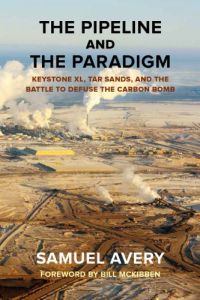Join getAbstract to access the summary!

Join getAbstract to access the summary!
Samuel Avery
The Pipeline and the Paradigm
Keystone XL, Tar Sands, and the Battle to Defuse the Carbon Bomb
Ruka Press, 2013
What's inside?
Keystone XL pipeline, the world’s biggest energy project, can supply needed fuel but will cause environmental harm.
Recommendation
Passionate environmentalist Samuel Avery sets out to raise awareness about Keystone, the world’s largest energy project. He makes a compelling case for opposing it. Avery does include arguments from Keystone proponents, but he distills the debate – and the paradigm – down to environmentalism versus economics. He states that burning Canadian tar sands would release a great deal more carbon dioxide into the already polluted atmosphere. His polemic presents a fraught environmental scenario, but also proves informative, inspiring and compelling. Avery misunderstands where his audience’s interests lie; he spends too many pages reproducing conversations with fellow activists, even though the facts alone are far more convincing. A rigorous edit would have produced a more satisfying read. While always remaining politically neutral, getAbstract recommends this heartfelt side of the debate to those concerned about energy and climate change and to anyone who wants to learn more about the extraction of oil from tar sands and Keystone itself. Presidential approval or disapproval is pending.
Summary
About the Author
Samuel Avery is a solar installer, social activist and trainer in nonviolent resistance techniques. His other books include The Globalist Papers and Buddha and the Quantum.

















Comment on this summary